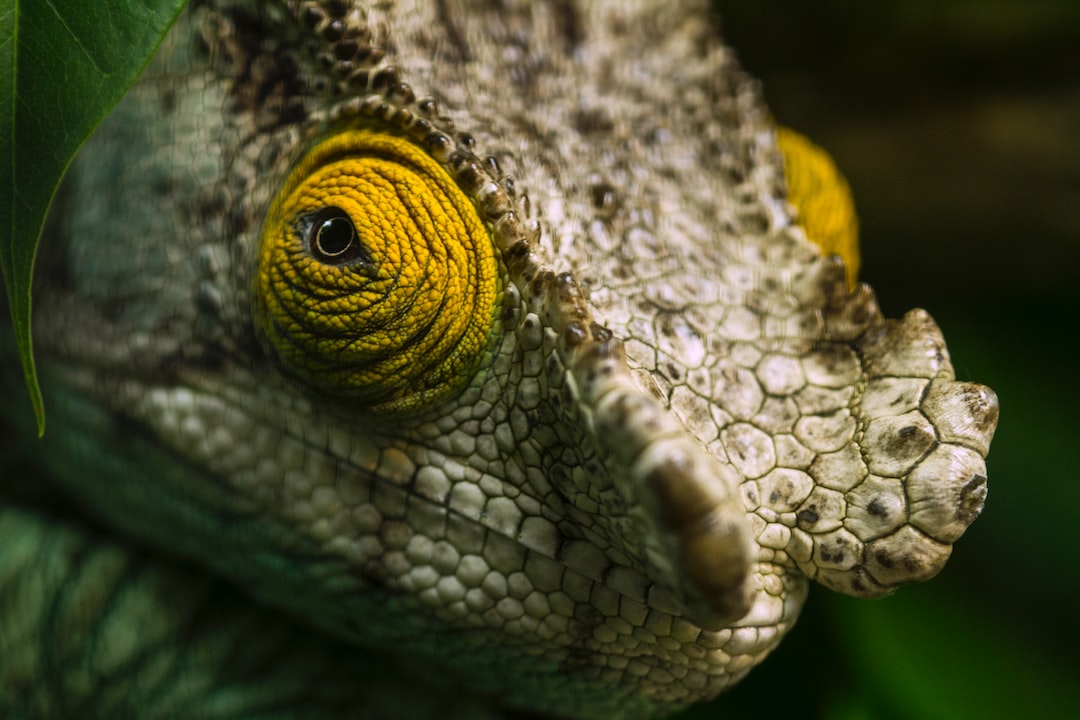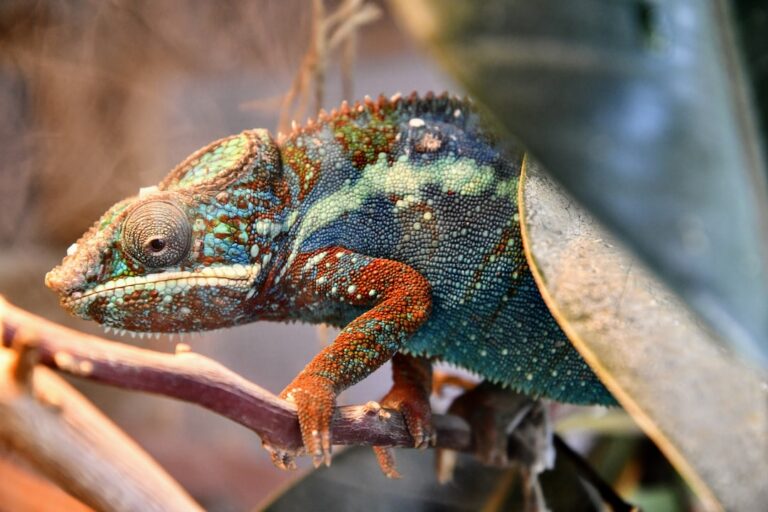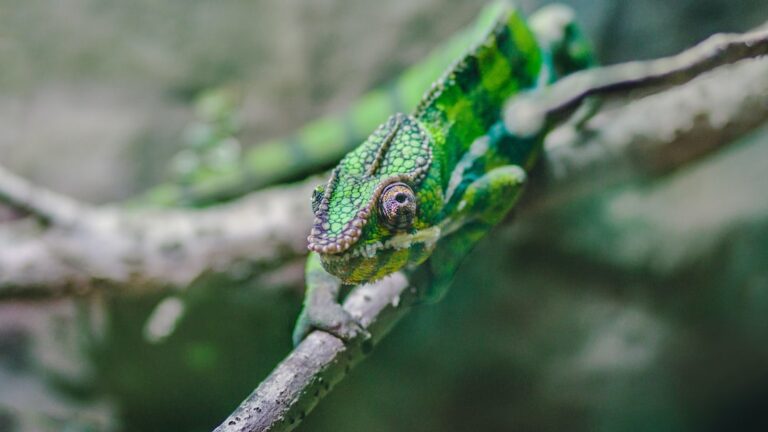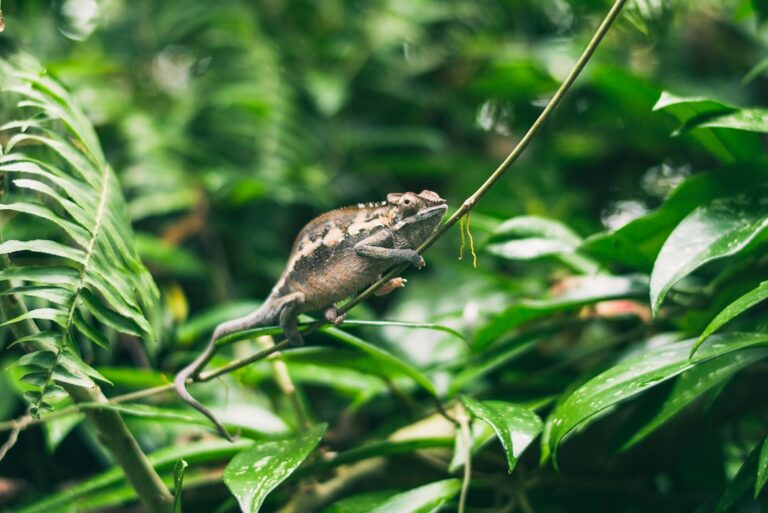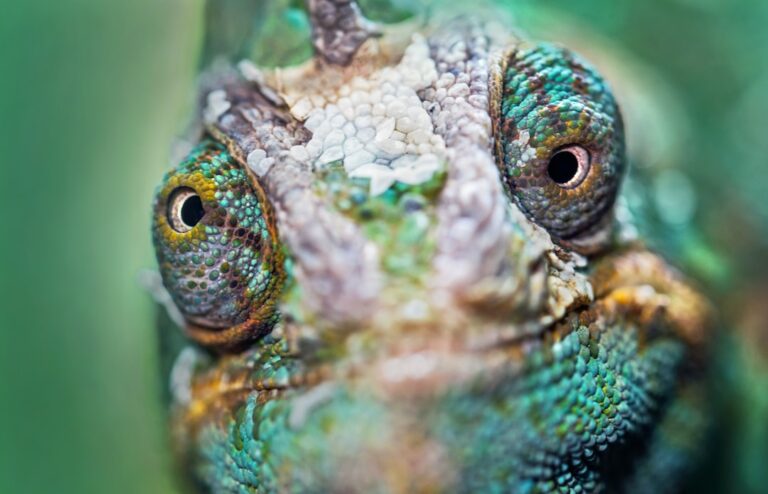Do Chameleons’ Nails Grow Back?
Chameleons are fascinating creatures known for their ability to change color and blend into their surroundings. They are reptiles that belong to the family Chamaeleonidae and are native to Africa, Madagascar, and parts of southern Europe and Asia. Chameleons have unique characteristics that set them apart from other reptiles, such as their independently moving eyes, long tongues, and prehensile tails.
One often overlooked aspect of chameleon anatomy is their nails. Chameleon nails play a crucial role in their health and survival. They are used for climbing, gripping branches, and hunting prey. Without properly functioning nails, chameleons would struggle to navigate their environment and catch food.
Table of Contents
Understanding the Anatomy of Chameleon Nails
Chameleon nails are made of keratin, the same material that makes up human nails. They are attached to the last bone of each toe and are curved in shape. The front nails are typically longer and sharper than the back nails, which helps chameleons grasp onto branches and climb with ease.
Proper nail length and shape are essential for chameleon health. If the nails become too long or sharp, they can cause injury to the chameleon or damage their enclosure. On the other hand, if the nails are too short or dull, the chameleon may struggle to grip onto surfaces or catch prey.
Common Causes of Chameleon Nail Loss
There are several factors that can lead to chameleon nail loss. Environmental factors such as humidity and temperature play a significant role in nail health. If the humidity levels in the chameleon’s enclosure are too low, it can cause the nails to become dry and brittle, leading to breakage or loss. Similarly, extreme temperatures can also affect nail health.
Improper handling or enclosure design can also contribute to nail loss. Rough handling or improper gripping can cause the nails to break or tear. Additionally, if the chameleon’s enclosure does not provide enough climbing surfaces or branches, they may not have the opportunity to wear down their nails naturally, leading to overgrowth and potential breakage.
Nutritional deficiencies or imbalances can also impact chameleon nail health. A diet lacking in essential nutrients, such as calcium and vitamin D3, can weaken the nails and make them more prone to breakage. Similarly, an imbalance in other vitamins and minerals can also affect nail health.
Parasites or infections can also cause chameleon nail loss. Parasites such as mites or fungal infections can weaken the nails and cause them to fall off. It is important to regularly check for signs of parasites or infections and seek veterinary care if necessary.
Can Chameleon Nails Grow Back Naturally?
Yes, chameleon nails have the ability to grow back naturally. The process of nail regeneration in chameleons is similar to that of other reptiles. When a nail is lost, a new nail bed forms, and the nail gradually regrows from the base.
The rate of nail growth can vary depending on several factors, including the age and overall health of the chameleon, the severity and cause of nail loss, and the quality of care and nutrition provided.
Factors that Affect Chameleon Nail Regeneration
Several factors can affect the rate of chameleon nail regeneration. The age and overall health of the chameleon play a significant role. Younger chameleons tend to have faster nail growth compared to older individuals. Additionally, chameleons that are in good overall health with a balanced diet are more likely to have faster nail regrowth.
The severity and cause of nail loss also impact regeneration. If the nail loss was due to injury or trauma, it may take longer for the nail to regrow compared to natural shedding. Similarly, if the nail loss was due to a nutritional deficiency or infection, it may take longer for the nail to regrow as the underlying issue is addressed.
Proper care and nutrition are crucial for promoting chameleon nail regeneration. Providing a suitable enclosure with proper humidity and temperature levels, regular nail trimming and maintenance, and a balanced diet with the necessary nutrients can all help support healthy nail growth.
How Long Does it Take for Chameleon Nails to Grow Back?
The average time frame for chameleon nail regrowth can vary depending on the factors mentioned above. In general, it can take anywhere from several weeks to a few months for a chameleon’s nails to fully regrow.
Factors that can speed up the process include providing optimal care and nutrition, maintaining proper humidity and temperature levels, and addressing any underlying health issues. On the other hand, factors that can slow down the process include poor care and nutrition, improper enclosure conditions, and ongoing health issues.
Tips for Promoting Chameleon Nail Growth
There are several tips that can help promote chameleon nail growth. First and foremost, it is important to provide a suitable enclosure with proper humidity and temperature levels. Chameleons require a humid environment to maintain healthy nails. Regular misting or the use of a humidifier can help ensure adequate humidity levels.
Regular nail trimming and maintenance are also essential. Overgrown nails can lead to breakage or injury. Trimming the nails every few weeks or as needed can help prevent these issues. It is important to use proper tools and techniques when trimming chameleon nails to avoid causing injury.
Nutritional supplements and a balanced diet are crucial for promoting overall chameleon health, including nail growth. Providing a varied diet that includes gut-loaded insects, fruits, vegetables, and calcium supplements can help ensure that chameleons receive all the necessary nutrients for healthy nail growth.
The Role of Diet in Chameleon Nail Health
Proper nutrition is essential for chameleon nail health. Chameleons require a diet that is rich in calcium, vitamin D3, and other essential nutrients. Calcium is particularly important for nail health, as it helps strengthen the nails and prevent breakage.
Feeder insects should be gut-loaded with calcium-rich foods before being fed to the chameleon. Additionally, dusting the insects with a calcium supplement can help ensure that the chameleon receives adequate calcium intake.
It is also important to provide a variety of fruits and vegetables in the chameleon’s diet to ensure a well-rounded nutritional profile. Leafy greens, such as kale and collard greens, are particularly beneficial for nail health due to their high calcium content.
When to Seek Veterinary Care for Chameleon Nail Issues
While chameleon nail loss is a common occurrence, there are certain situations where veterinary care may be necessary. If the nail loss is accompanied by signs of infection, such as redness, swelling, or discharge, it is important to seek veterinary care. Similarly, if the chameleon shows signs of pain or discomfort, such as limping or reluctance to use the affected limb, veterinary attention is warranted.
Regular check-ups with a reptile veterinarian are also important for maintaining chameleon nail health. A veterinarian can assess the overall health of the chameleon and provide guidance on proper care and nutrition.
Preventing Chameleon Nail Loss and Damage
Prevention is key when it comes to chameleon nail health. Proper handling techniques should be used to avoid causing injury or trauma to the nails. It is important to support the chameleon’s body while handling and avoid excessive force or pressure on the nails.
Enclosure design and maintenance are also crucial for preventing nail loss and damage. Providing ample climbing surfaces and branches can help ensure that the chameleon has opportunities to wear down their nails naturally. Regular cleaning and maintenance of the enclosure can also help prevent the buildup of bacteria or parasites that can affect nail health.
Regular nail trimming and maintenance should be part of the chameleon’s care routine. Trimming the nails every few weeks or as needed can help prevent overgrowth and potential breakage. It is important to use proper tools and techniques when trimming chameleon nails to avoid causing injury.
A balanced diet with the necessary nutrients is essential for overall chameleon health, including nail health. Providing a varied diet that includes gut-loaded insects, fruits, vegetables, and calcium supplements can help ensure that chameleons receive all the necessary nutrients for healthy nail growth.
Conclusion:
Chameleon nails play a crucial role in their health and survival. Understanding the anatomy of chameleon nails and the factors that can affect their health is essential for providing proper care. Chameleon nails have the ability to grow back naturally, but several factors can impact the rate of regeneration. Providing optimal care and nutrition, maintaining proper enclosure conditions, and addressing any underlying health issues are all important for promoting healthy nail growth. Regular check-ups with a reptile veterinarian and proper handling techniques can also help prevent nail loss and damage. By prioritizing chameleon nail care, owners can ensure the overall health and well-being of their beloved pets.
If you’re interested in learning more about reptiles and their unique behaviors, you might also enjoy reading the article “Are Chameleons Sensitive to Sound?” This fascinating piece explores the auditory capabilities of chameleons and delves into whether or not they can hear. Discover how these remarkable creatures perceive sound and how it affects their behavior. To dive into this intriguing topic, click here.

